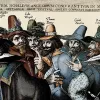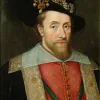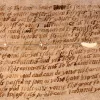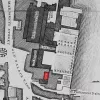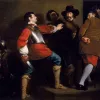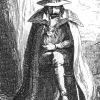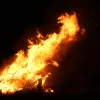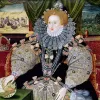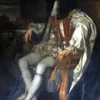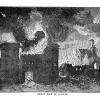Important update from TheSchoolRun
For the past 13 years, TheSchoolRun has been run by a small team of mums working from home, dedicated to providing quality educational resources to primary school parents. Unfortunately, rising supplier costs and falling revenue have made it impossible for us to continue operating, and we’ve had to make the difficult decision to close. The good news: We’ve arranged for another educational provider to take over many of our resources. These will be hosted on a new portal, where the content will be updated and expanded to support your child’s learning.
What this means for subscribers:
- Your subscription is still active, and for now, you can keep using the website as normal — just log in with your usual details to access all our articles and resources*.
- In a few months, all resources will move to the new portal. You’ll continue to have access there until your subscription ends. We’ll send you full details nearer the time.
- As a thank you for your support, we’ll also be sending you 16 primary school eBooks (worth £108.84) to download and keep.
A few changes to be aware of:
- The Learning Journey weekly email has ended, but your child’s plan will still be updated on your dashboard each Monday. Just log in to see the recommended worksheets.
- The 11+ weekly emails have now ended. We sent you all the remaining emails in the series at the end of March — please check your inbox (and spam folder) if you haven’t seen them. You can also follow the full programme here: 11+ Learning Journey.
If you have any questions, please contact us at [email protected]. Thank you for being part of our journey it’s been a privilege to support your family’s learning.
*If you need to reset your password, it will still work as usual. Please check your spam folder if the reset email doesn’t appear in your inbox.
Guy Fawkes and Bonfire Night
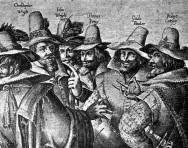
Who was Guy Fawkes?
In 1605, Guy Fawkes and his friends wanted to blow up important buildings in London where the King and his leaders were so someone else would rule England instead. He was caught before he did this so nobody was hurt, and it’s because of him that we celebrate Bonfire Night on 5 November.
Guy Fawkes didn’t do this alone – he had a group of people working on the plan with him. They filled up the basement in the Houses of Parliament in London with lots and lots of gunpowder, which would have caused the buildings to explode and also kill King James I and other people in charge of the country. Fortunately, they were caught before this happened, and Guy Fawkes went to jail on 5 November – we remember this every year on Bonfire Night.
Top 10 facts
- 5 November is known as Bonfire Night or Guy Fawkes Night.
- Guy Fawkes was born on 13 April 1570 in York, and died on 31 January 1606 in London.
- He was alive at the end of Queen Elizabeth I’s reign, and the beginning of King James I’s reign.
- Guy Fawkes was a Catholic, and didn’t agree with the Protestant faith of the King.
- Guy became friends with Robert Catesby, who had an idea to kill the King by blowing up the houses of Parliament.
- It was actually Robert Catesby who led the Gunpowder Plot, not Guy Fawkes – there were 13 people involved.
- The job Guy Fawkes had in the Gunpowder Plot was to guard the 36 barrels of gunpowder that had been stored in a basement underneath the House of Lords.
- Guy Fawkes was arrested in the basement on the day he was going to light the gunpowder, 5 November, and he was taken to the Tower of London.
- King James I decreed that 5 November should be the day that people always celebrate that the Gunpowder Plot didn’t happen.
- On Bonfire Night, grown-ups set off fireworks, light bonfires, and sometimes burn a doll that looks like Guy Fawkes.
Timeline
- 13 April 1570Guy Fawkes was born in York
- 24 March 1603King James I was crowned King of England
- 20 May 1604Guy met with some of the other people involved in the Gunpowder Plot for the first time in the Duck and Drake pub

- March 1605Guy and his friends rented a basement that was located underneath the House of Lords, and started to fill it with barrels of gunpowder
- 26 October 1605Lord Monteagle received a letter warning him of something bad happening on 5 November
- 1 November 1605The letter that Lord Monteagle received was shown to King James I
- 5 November 1605Guy Fawkes was arrested in the basement of the houses of Parliament
- 31 January 1606Guy Fawkes was put to death


Boost Your Child's Maths & English Skills!
- Start your child on a tailored learning programme
- Weekly resources sent direct to your inbox
- Keep your child's learning on track
Did you know?
- The plan to blow up Parliament is also called the Gunpowder Plot.
- Guy is sometimes known as Guido, which how you’d say ‘Guy’ in Italian.
- There were 36 barrels of gunpowder in the basement underneath the House of Lords, which was 25 times more than they needed to blow up the houses of Parliament!
- The name of the pub where Guy Fawkes and his friends met to talk about the plot to kill the King is called the Duck and Drake.
- Guy Fawkes is quoted as having said, "A desperate disease requires a dangerous remedy."
- After people found out that the King had been saved, they lit bonfires in his honour. We still do this today on every 5 November – Bonfire Night.
- When Guy Fawkes was arrested, he lied and said that his name was John Johnson.
- On Bonfire Night, sometimes a figure looking like Guy Fawkes is burned in a bonfire.
- On Bonfire Night, people sometimes eat Parkin Cake, which is made from oatmeal and treacle.
Look through the gallery below and see if you can spot all these images:
- Eight of the 13 people involved in the Gunpowder Plot
- King James I of England and VI of Scotland
- The warning letter that Lord Monteagle received
- A map showing where the House of Lords was
- A painting of Guy Fawkes being arrested
- Guy Fawkes
- A bonfire on Bonfire Night
- Fireworks on Bonfire Night
Gallery
About
Guy Fawkes was arrested for high treason – this means that because he was involved in the plot to kill the King, he wasn’t loyal to England, and this was a serious crime. King James I of England is also known as King James VI of Scotland.
Catholics who refused to attend Protestant church services were called recusants. Recusants sometimes had to pay fines, or even be put in jail.
Catholics were frustrated about the way they were treated in Protestant England, and wanted a King who wasn’t going to punish them for their religious beliefs.
The Gunpowder Plot was discovered because of a man called Lord Monteagle – he was supposed to be in Parliament on 5 November, and someone sent him a letter warning him to stay away. Lord Monteagle told other people about the letter he received, and the places around Parliament were searched.
Guy Fawkes was arrested early in the morning on 5 November 1605 in the basement where the barrels of gunpowder were stored – it was supposed to be his job to light it at the right time.
There were two parts to the Gunpowder Plot – only one of them was blowing up the Parliament buildings and killing the King. Some of the men in the group of 13 weren’t in London on 5 November because they were traveling north to start an uprising. The plan was that when the news spread that the King was dead, these men could get other Catholics who were just as frustrated as they were to revolt against the laws against their faith. They also wanted to put James I’s young daughter, Princess Elizabeth, on the throne.
While this tradition didn’t start until some time later, the Yeomen of the Guard still search the basements before the State opening of Parliament (when the King or Queen is there) as another way to remember what happened during the Gunpowder Plot – and make sure nothing like that ever happens again.
Famous friends – Guy’s fellow conspirators
Robert Catesby (1573-1605) – Robert Catesby was a wealthy Englishman and devout Catholic. He led the Gunpowder Plot, and was killed a few days after Guy Fawkes was arrested.
Thomas Wintour (1571-1606) – Thomas Wintour, brother of Robert WIntour and cousin of Robert Catesby, was one of the group of the first five plotters who met at the Duck and Drake in May 1604. He was arrested after the Gunpowder Plot was discovered, and his signed confession tells us a lot of what we know about the plot.
Robert Wintour (1568 -1606) – Robert Wintour was the brother of Thomas Wintour and the cousin of Robert Catesby. He joined the Gunpowder Plot in the spring of 1605. After the plot failed and Guy Fawkes was arrested, Robert managed to hide for a few months but was eventually arrested in January 1606. He was put to death on the day before Guy Fawkes was.
Thomas Percy (1560-1605) – Thomas Percy was one of the first five members of the Gunpowder Plot group. He rented a house near the Parliament buildings, and Guy Fawkes pretended to be his servant, using the fake name ‘John Johnson’. Thomas Percy also rented the basement located underneath the House of Lords where the gunpowder was stored. He was killed a few days after Guy Fawkes was arrested, along with Robert Catesby.
Robert Keyes (1565-1606) – Robert Keyes joined up with Robert Catesby’s group in October 1604. It was his job to guard the gunpowder. He was arrested and put to death on the same day as Guy Fawkes.
Ambrose Rookwood (1578-1606) – Ambrose Rookwood was a good friend of Robert Catesby’s. When Ambrose found out that Guy Fawkes had been arrested before being able to light the barrels of gunpowder, he left London to tell Robert Catesby, who was travelling north to take care of another part of the plot. Ambrose was arrested on 8 November 1605, and put to death on the same day as Guy Fawkes.
Sir Everard Digby (1578-1606) – Sir Everard Digby met Robert Catesby in 1605, and Robert asked Everard to help him in the Gunpowder Plot. Everard wasn’t one of the main people involved and had a job that meant he didn’t have to go to London. He was arrested on 8 November 1605, and put to death on the day before Guy Fawkes died.
Francis Tresham (1567-1605) – Francis Tresham wasn’t part of the Gunpowder Plot until October 1605. Robert Catesby, and even some people today, think that he wrote an anonymous letter to Lord Monteagle warning him of danger if he went to the House of Lords on 5 November; this is because Francis was upset that some of his relatives would be killed if the explosion happened. Francis was arrested after the Gunpowder Plot failed and taken to the Tower of London, where he died about a month later.
Thomas Bates (?-1606) – Thomas Bates knew Robert Catesby for a long time, and became part of the Gunpowder Plot because he was suspicious of some things Robert was doing. When Robert told him about the plot, Thomas agreed to help. After the plot was discovered and Guy Fawkes was arrested, Thomas was captured too. He was put to death a day before Guy Fawkes was.
Christopher Wright (1570-1605) – Christopher Wright, John Wright’s brother, was a devout Catholic, and had often been arrested for being a recusant. Both he and John were killed on 8 November 1605, after the Gunpowder Plot failed.
John Wright (1568-1605) – John Wright was the brother of Christopher Wright. He was often arrested for being a recusant. Both John and Christopher went to the same school as Guy Fawkes. They were both killed on 8 November 1605 after Guy Fawkes was found in the basement below the House of Lords with barrels of gunpowder.
John Grant (1570-1606) – John Grant was asked to join the group planning the Gunpowder Plot in the spring of 1605. He was with Robert Catesby outside London at the time Guy Fawkes was arrested, and was blinded when he sat near some gunpowder that was drying in front of a fire and exploded. He was killed shortly after, along with Robert.
Related Videos
Just for fun...
- Fawkes' 13: watch the Horrible Histories story of how Guy Fawkes and his fellow conspirators embarked on a devilish plot to blow up Parliament
- Play BBC Bitesize's interactive game Astonishing Activists and take a trip back in time with the people like Guy Fawkes who wanted to change the world
- Make shadow puppets of Guy Fawkes, Robert Catesby and James I and put on a play to explain the events of the Gunpowder Plot
- Try some Guy Fawkes crafts like fireworks in a bottle and sparkler rings
- Listen to a Guy Fawkes audio drama on the UK Parliament YouTube page, or find it in the SchoolRun video player above
- Guy Fawkes colouring sheets, mazes and more
- Make some Parkin Cake, traditionally eaten on Bonfire Night
- Complete a challenging Guy Fawkes wordsearch
Books about Guy Fawkes for children
Find out more about Guy Fawkes
- Look through BBC Bitesize's Guy Fawkes guide – it includes an animated video and a game
- The DKfindout! children's guide to Guy Fawkes and the Gunpowder Plot
- Read a Gunpowder Plot fact file
- 'A penny for the Guy': why do we celebrate Bonfire Night 400 years on? Find out in an interactive guide from the BBC
- Guy Fawkes facts for kids from the Kiddle Encyclopedia
- Understand the story behind Bonfire Night in a Newsround guide
- There's loads of information about Guy Fawkes, plus lots of pictures, on the Tower of London Gunpowder Plot guide
- The letter written to Lord Monteagle, warning him of the Gunpowder Plot
- Download a presentation about Guy Fawkes with lots of pictures
- See a contemporary portrait of the Gunpowder Plot Conspirators
- The traditional Guy Fawkes Day poem
- Tips for firework safety
- Watch short BBC animations exploring the Gunpowder Plot of 1605 and explaining why it happened, the main events and the consequences for Guy Fawkes and the other plotters
See for yourself
- The signed confessions of Guy Fawkes and others involved in the Gunpowder Plot are in the National Archives.
- On Hoxton Street in London, there is a plaque showing the spot where Lord Monteagle received the letter warning him of danger if he attended the opening of Parliament on 5 November.
- Lewes in East Sussex is known for having the best Bonfire Night celebrations.
- At the Ashmolean Museum, you can see the lantern that Guy Fawkes was carrying when he was arrested.
